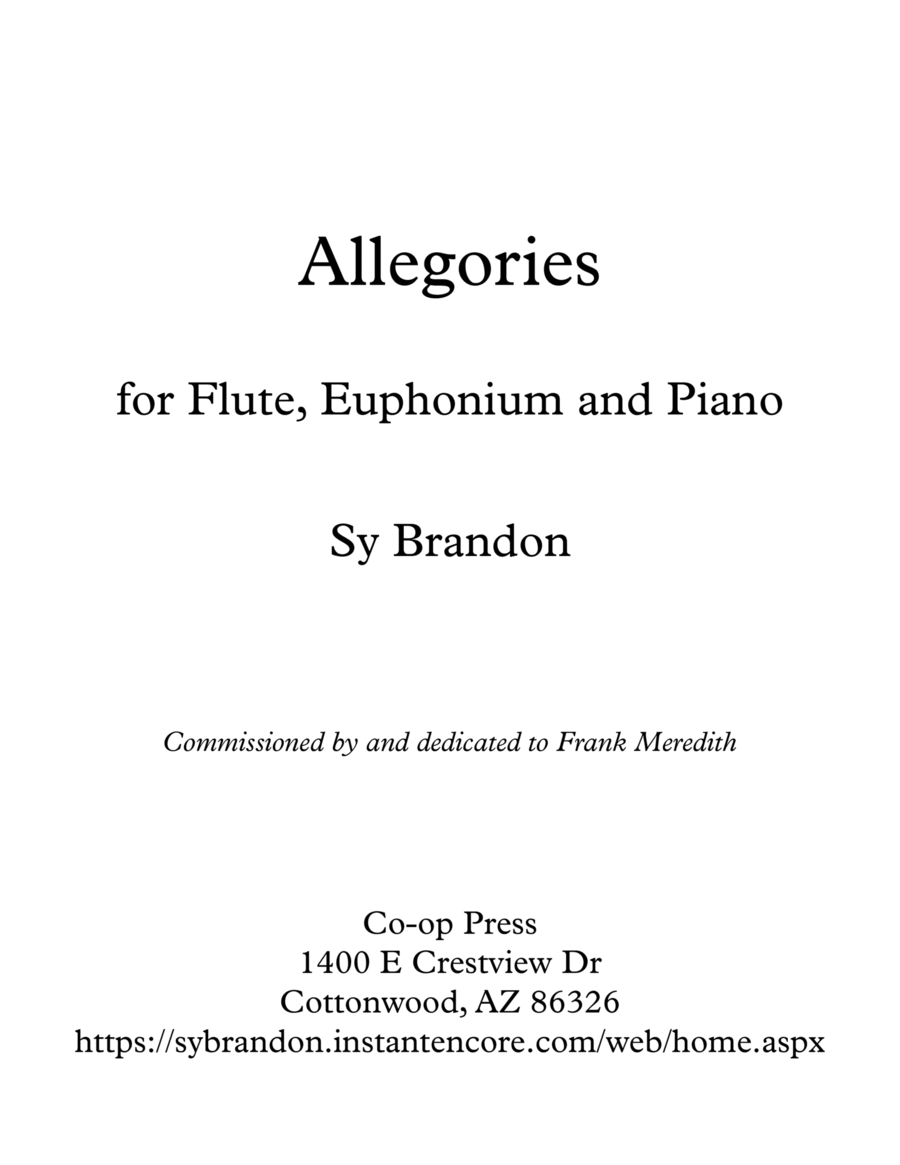Euphonium,Flute,Piano - Level 5 - Digital Download SKU: A0.1141957 Composed by Sy Brandon. 20th Century,Chamber,Children,Classical. 65 pages. Sy Brandon #742334. Published by Sy Brandon (A0.1141957). “Allegories” is a five-movement composition based upon Aesop’s Fables. It was commissioned by and dedicated to Frank Meredith. The first movement “The Trumpeter Taken Captive” is a fable about how one’s actions affect the outcome. The trumpeter, who incites others to do battle, is as guilty as those who slay the enemy. The euphonium represents the trumpeter by playing battle tunes. Then the ensemble plays capture music, begging music, fatal music representing the slaying of the trumpeter (euphonium), and finally music representing the moral of the story. “The Boy Who Cried Wolf” is the basis for the second movement. The allegory is that nobody believes a liar. The flute plays a shepherd’s tune to represent the bored shepherd boy. The ensemble plays excited music three times as the boy cries wolf, the first two times just to amuse himself. After the third time when nobody responds to his cries, the flute plays a lament to end the movement. The third movement reflects the story of “The Goose That Laid The Golden Egg.” A golden euphonium melody accompanied by rich harmony represents the golden eggs laid by the goose. The ensemble then plays greedy music that is followed by a minor key lament as the farmer has killed his rich source of income because of his greed. A sweet dancing flute solo begins movement four appropriately named “The Fisherman and His Flute.” This short fable has the allegory of “timing is everything.” The poor fisherman expected the fish to jump out of the sea in response to his flute playing to no avail. When the ensemble plays a similar tune, it represents his success when he uses his net. The fisherman says “you bloody fish, when I played the flute you wouldn’t dance, but as soon I stopped, you started up.” The race between the “Tortoise and the Hare” is the subject of the last movement. The plodding euphonium represents the tortoise and the fast and agile flute represents the hare. The flute takes a nap in the middle of the movement and by the time the flute wakes up, it is too late to catch up with the slow and steady tortoise. The race is not always to the swift.
